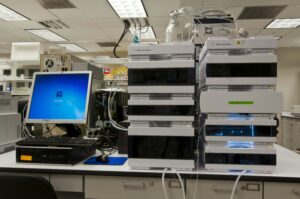
In a groundbreaking study published in Science, researchers from the University of Chicago have unveiled the intricate process that preserved the remains of the duck-billed dinosaur, Edmontosaurus annectens, as “mummies” with remarkably detailed features. These findings, dating back 66 million years, reveal the dinosaur’s scales and hooves through a preservation method known as clay templating. This process involved a thin clay mask, no thicker than 1/100th of an inch, preserving the dinosaur’s external fleshy surface over its skeleton after burial.
Using advanced imaging techniques, scientists have reconstructed the dinosaur’s appearance, showcasing features such as a tall crest over its neck and trunk, and a row of spikes along its tail. This detailed reconstruction, combined with fossilized footprints, provides the most complete view to date of the duck-billed dinosaur’s appearance.
“It’s the first time we’ve had a complete, fleshed-out view of a large dinosaur that we can really feel confident about,” said senior author Paul Sereno, PhD, Professor of Organismal Biology and Anatomy at UChicago.
Rediscovering the ‘Mummy Zone’
The discovery was made in the badlands of Wyoming, an area now dubbed a “mummy zone” due to its unique preservation conditions. Sereno and his team, using historical photos and field research, relocated sites in east-central Wyoming where several dinosaur mummies were originally found in the early 20th century. In these stacked river sands, two new Edmontosaurus mummies were excavated, revealing large areas of preserved skin.
Unlike human-prepared mummies, these dinosaur mummies contain no organic material. Instead, the skin, spikes, and hooves are preserved as a sub-millimeter clay film that formed on the carcass surface shortly after burial.
“This is a mask, a template, a clay layer so thin you could blow it away,” Sereno explained. “It was attracted to the outside of the carcass in a fluke event of preservation.”
Imaging Techniques and Reconstruction
The research team employed a variety of imaging tools, including hospital and micro-CT scans, X-ray spectroscopy, and clay analyses, to understand the preservation process. After the dinosaurs’ carcasses were suddenly buried by a flash flood, a biofilm on the surface electrostatically attracted clay from the wet sediment, forming a thin template layer that captured the surface details in three dimensions. Over time, the organic material decayed, leaving behind the fossilized skeleton.
Exposing this delicate clay boundary required meticulous cleaning, led by Fossil Lab manager Tyler Keillor. Postdoctoral scholar Evan Saitta and other researchers used 3D surface imaging and CT scans to reconstruct the dinosaur’s soft anatomy and fit the hooves into fossilized footprints. Digital artists then collaborated with the science team to visualize the dinosaur’s fleshy appearance and movement.
“I believe it’s worth taking the time to assemble a dream team in order to generate science that can be appreciated by the general public,” Sereno said.
Reconstructing the Edmontosaurus
Working with the two newly discovered mummies, researchers were able to create a comprehensive profile of Edmontosaurus annectens. The specimens revealed a continuous midline feature, starting as a crest along the neck and trunk and transitioning into a row of spikes along the tail. The lower body and tail featured the largest polygonal scales, while most scales were surprisingly small for a dinosaur of its size.
The hind feet of the larger mummy revealed a surprising feature: hooves. Each of the three hind toes was encased in a wedge-shaped hoof, similar to a horse’s. Using CT scans and 3D images, the team accurately reconstructed the hind foot’s appearance, noting the presence of a fleshy heel pad behind the hooves.
“There are so many amazing ‘firsts’ preserved in these duck-billed mummies,” Sereno said. “The earliest hooves documented in a land vertebrate, the first confirmed hooved reptile, and the first hooved four-legged animal with different forelimb and hindlimb posture.”
Implications for Future Research
Beyond the anatomical revelations, this study provides a toolkit for future research on dinosaur soft anatomy. It introduces new preparation methods, a lexicon for soft structures and scales, and an imaging workflow from fossil to flesh model. The research also offers a new model for dinosaur mummification involving clay templating, which can be tested on future finds.
The authors suggest future research directions, including targeted searches for similarly preserved specimens in Wyoming and elsewhere, biomechanical models using reliable external boundaries, and analyses of when and where clay templating occurs.
“This may be the single best paper I’ve released,” Sereno said. “From field to lab to 3D reconstructions along with a suite of useful terms defined, it’s a tour de force, and it tells a coherent story about how these remarkable fossils come to be and what we can learn from them.”






